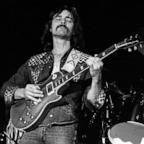Just like old times, an offensive mindset is paramount to success
— -- It's a simple question, one of the oldest in the book of sports, and it applies to individual as well as team games: Does great offense beat great defense? ?
The answer to that question in?men's tennis for some years (with a few exceptions like the French Open final 2015), has been a resounding "no." But that may be changing, as the upsets of heavy favorites No. 1 Andy Murray and No. 2 Novak Djokovic at the Australian Open suggest. ?
Mischa Zverev, who stunned Murray on Saturday, added old-school tactical expertise to the very short list of ways to beat great defenders. He attacked the net 118 times, and made great use of his slice backhand to disrupt Murray's rhythm and keep the match from becoming a track meet. ?
Zverev later revealed how critical his tactics were.
"I knew, I could get to him with my game. I believed that playing serve and volley against him and slicing a lot, trying to destroy his rhythm was going to work, which it did in the end," he said. "There was no Plan B [because] I can't stay on the baseline, a couple feet behind the baseline, try to out-rally him." ?
It's surprising how few players have tried similar tactics. Jimmy Arias, once No. 5 in the world and now a commentator for Tennis channel, is convinced this reluctance has helped enable the great defenders -- Murray, Djokovic, Rafael Nadal?-- to run roughshod over their rivals. ?
Ivan Lendl, a great defender who masterminded Murray's rise to the top, routinely hammered Arias in their meetings in the early 1980s. Tired of absorbing five consecutive drubbings without even winning a set, Arias tried the same tactics that worked for Zverev against Murray when he played Lendl in what turned out to be their final match. ?
"I served and volleyed every point," Arias told ESPN.com. "Late in the critical set, I got tight and just wasn't good or confident enough as a volleyer to finish the job, and I lost 6-4 in the third. It was still the best I ever did against Lendl." ?
These are different times, of course. But Arias is dumbfounded by the degree to which today's players ignore strategy and tactics.
"It drives me nuts," he said. "Players don't watch opponents and work on weaknesses. These days, everyone wants to play his own game." ?
Others may take notice of Zverev's success and re-think their tendency to cling to futile or passive strategy and tactics. ? ?
When it comes to players who can generate overwhelming power, the cohort has been increasing. ?
Juan Martin del Potro never got a clean shot at finishing the job he started when he beat Rafael Nadal and Roger Federer in back-to-back matches to win the 2009 US Open. Del Potro has been plagued by career-threatening injuries ever since, but he's back in the mix with those pre-emptive weapons, a monstrous serve and scary forehand. ?
Marin Cilic also showed that offense-minded tennis can prevail when he broke the Big Four stranglehold on the US Open, winning it in 2014. Stan Wawrinka has powered through Djokovic like a tank demolishing a building in two Grand Slam finals. Then there's a fleet of younger players led by 26-year-old No. 3 Milos Raonic, who might be ready to change tone of the pro game in a way that might have been unthinkable just weeks ago. ?
Others include No. 8 Dominic Thiem, No. 13 Nick Kyrgios, No. 16 Lucas Pouille and Mischa Zverev's brother Alexander, a hard-charging 19-year-old who's already up to No. 24.
Promising newcomers in the group include Taylor Fritz, a 19-year-old American who's now in the top 100, as well as the tall, power-serving Russian 20-year-old, No. 52 Karen Khachanov. ?
The change, if it happens, should come as no surprise. ?
After all, it wasn't so long ago that Federer and his aggressive style appeared to be tennis' end game. Nadal changed all that, and then Djokovic came along to throw even more shade on the 17-time Grand Slam champ. But Nadal's star has faded and Djokovic is going back to the drawing board. Can Murray hold the fort? ?
"I don't see any power player taking over real soon, as far as being the top guy, unless he moves like Djokovic or a Murray, which none of those guys do," Patrick McEnroe said. "The way tennis has developed, right now movement is more important than power on a week-in, week-out basis. But players with more offense than defense can certainly break through and win majors." ?
McEnroe cites Wawrinka as Exhibit A, but Wawrinka is the first to admit he just doesn't win consistently enough to threaten the very top players.
Raonic may be a different story. He came agonizingly close to an upset of Murray in the Australian Open semis last year, and played a competitive final against Murray last July at Wimbledon. Raonic also had match point against Murray in the semis of the ATP World Tour Finals last November. Winning that point could have altered the entire narrative of the 2016 season. ?
Raonic has become the best player who has yet to win a major largely because of his atomic serve. But he has also worked extremely hard to become a better returner and to develop tools, like the slice backhand and inside-out forehand blast, that permit him to go toe-to-toe with the great defenders. Make no mistake, though, at heart he's still a bombardier. ?
"Raonic was moving very well, even outmaneuvering Murray in a?few of the long rallies in their last match [in London]," McEnroe said. "He doesn't look to me like he was born to hit a tennis ball. He's worked hard to get there; all credit in the world to him." ?
"Big servers in the past were kind of accustomed to winning lots of free points," Jimmy Arias said. "Murray and Djokovic have been taking that away. The thing is, how many people are going to come along who can do that, and all the other stuff as well?" ?
The likely answer: not many. ?
McEnroe believes the game is no longer very friendly to bigger players over 6-foot-4. Height and bulk simply become insurmountable disadvantages in a game played in a small area, where players must quickly move in multiple directions. ?
Kyrgios, who's a lean 6-4, is one player who fits McEnroe's ideal mold. Set aside his behavior and character issues for the moment; the reality is that even the wisest head in tennis come close to sounding like fanboys when they describe his potential. ?
"Kygrios to me is the best player in the world if he gets his head straight," Arias said. "He stands inside the baseline, the other guys serves 130 miles per hour, and Kyrgios returns it aggressively. He smacks winners left and right. How do you beat that?" ?
McEnroe added, "[Kyrgios] could take it to another level. Because his service action is phenomenal, and his ball has so much work on it. He makes easy power, and he has great racket control. I don't know really how fast he is because he never plays enough defense." ?
Kyrgios doesn't play enough defense because he doesn't have to, which pretty much describes why offense at a certain level is unbeatable. ?
Although he was a mere 5-9 and 155 pounds, Arias was quick and as powerful as a steel spring. He foreshadowed today's game with his inside-out forehand blasts. At his peak in the early 1980s, he set himself up for his forehand and went for broke. After he turned 20 and recovered from?a bout with mononucleosis, Arias lost the ability to wallop winners. He fell back on his rallying abilities, which were significant. But ... ??
"Suddenly I had to hope the other guy would miss," he said, "And I hated that. I'd much rather play a style where it's all in my hands." ?
That style may be coming back, sooner than any of us thinks.




